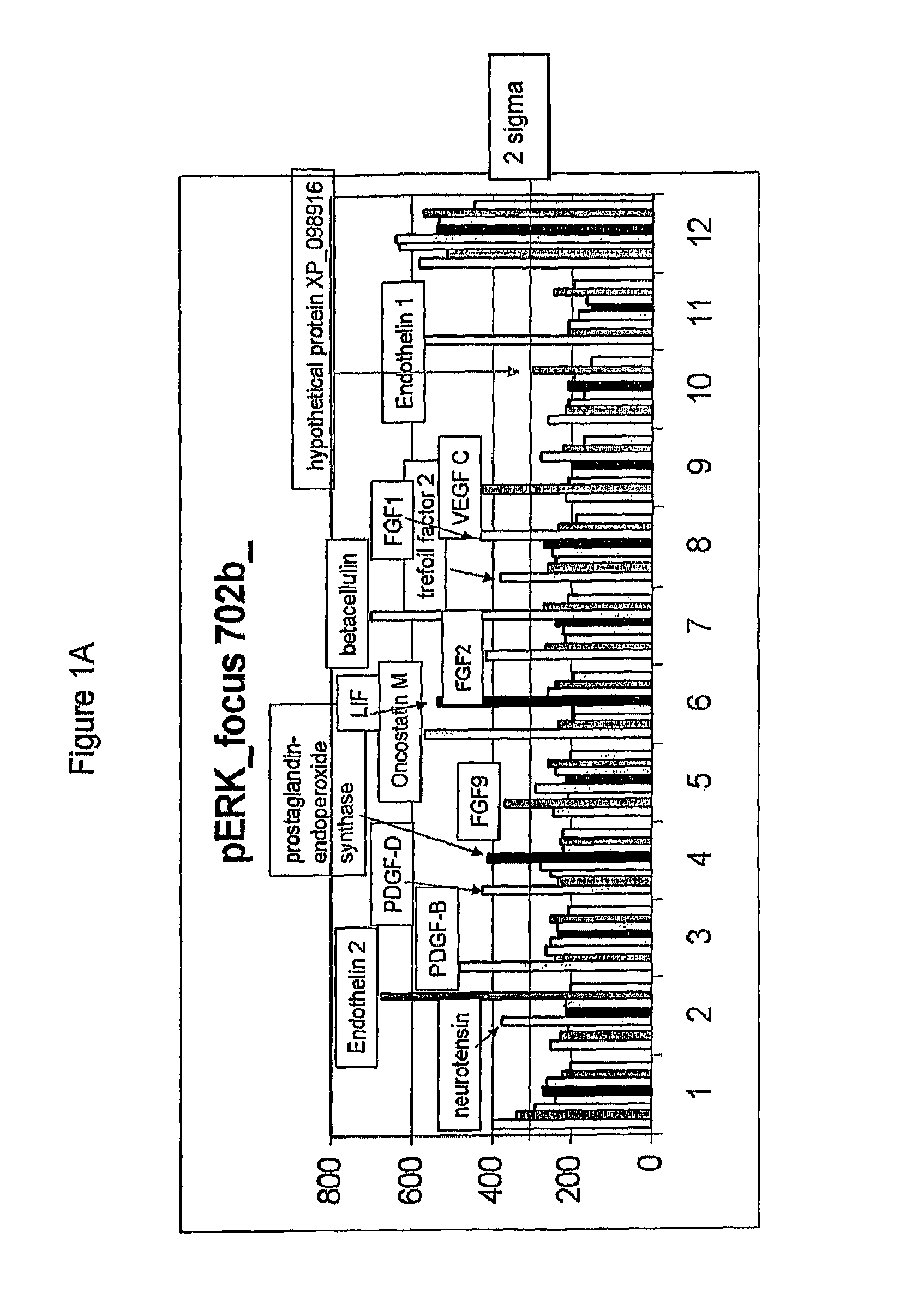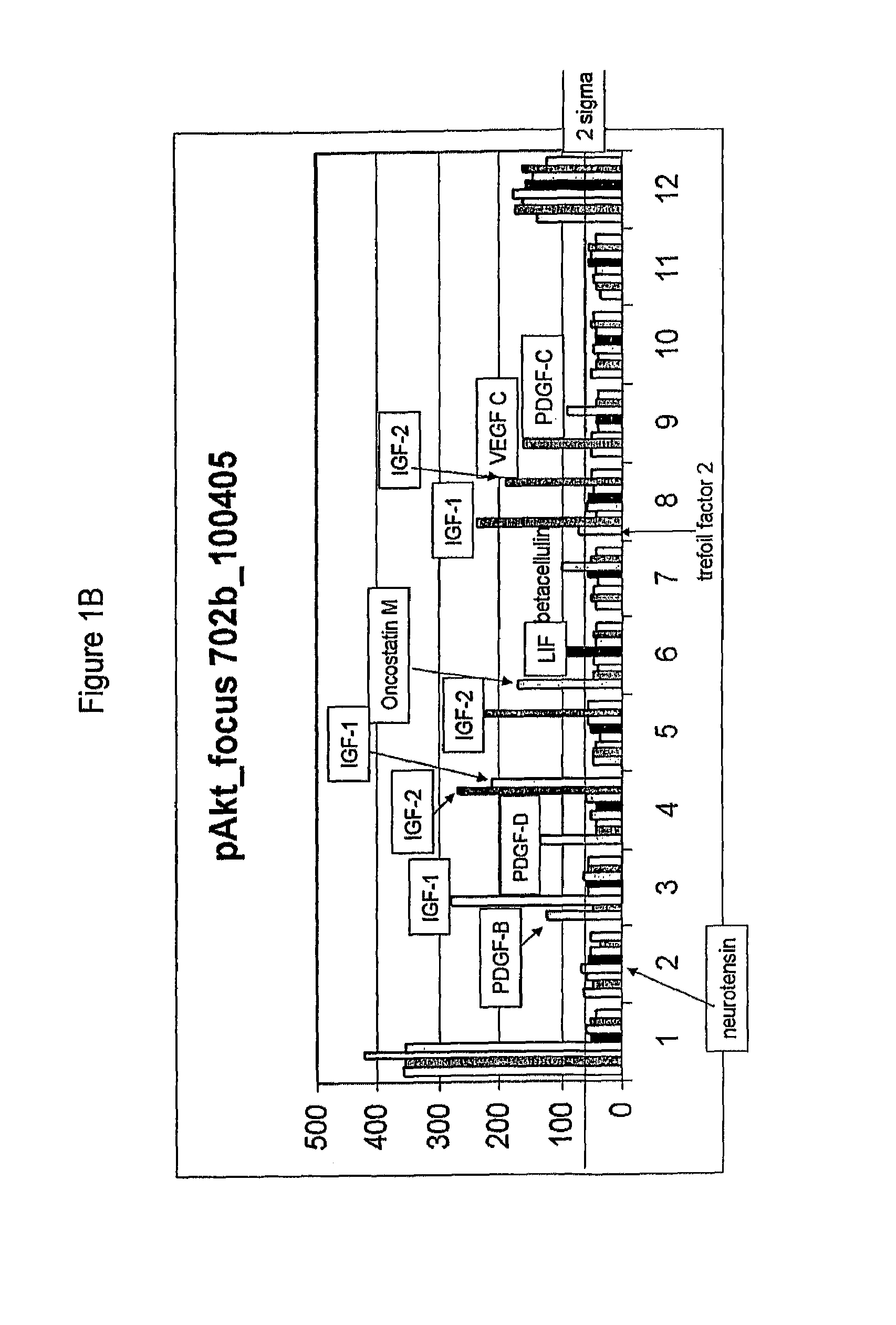Compositions comprising FGF-9 and betacellulin and methods for treating cardiac conditions
a technology of betacellulin and betacellulin, which is applied in the direction of drug compositions, antibody medical ingredients, peptide/protein ingredients, etc., can solve the problems of cardiac failure to pump blood efficiently, cardiac failure to achieve optimal oxygen and nutrients, and suboptimal cardiomyocyte function, etc., to avoid potential undesirable systemic side effects
- Summary
- Abstract
- Description
- Claims
- Application Information
AI Technical Summary
Benefits of technology
Problems solved by technology
Method used
Image
Examples
example 1
Isolation and Expansion of Adult Cardiac Stem Cells
[0251]Adult mouse (strain C57BL / 6J, Jackson Laboratory, Bar Harbor, Me.) cardiac stem cells were isolated and expanded using the method described by Messina et al., Circ. Res. (2004) 95:911-921. Briefly, isolated myocardial tissue was cut into 1- to 2-mm3 pieces, washed with Ca2+—Mg2+-free phosphate-buffered solution (PBS) (cat# 21-031-CM, Mediatech, Herndon, Va.), and digested with trypsin (cat# 15090-046, Invitrogen, Carlsbad, Calif.) and collagenase IV (cat# M1927, Sigma, St. Louis, Mo.). The cells thus obtained were discarded. The remaining tissue fragments were washed with complete explant medium (CEM), which contained Iscove's Modified Dulbecco's Medium (IMDM) (cat#12440, Invitrogen, Carlsbad, Calif.), fetal bovine serum (FBS) (cat# 35-015-CV, Mediatech, Herndon, Va.), penicillin and streptomycin (cat#15140-122, Invitrogen, Carlsbad, Calif.), L-glutamine (cat#25030-081, Invitrogen, Carlsbad, Calif.), and 2-mecaptoethanol (cat#...
example 2
Effect of Various Growth Factors on Cardiosphere Proliferation In Vitro
[0252]To test the effect of different substances, including a variety of growth factors, on cardiosphere proliferation, the small, phase-bright cells collected in Example 1 were seeded at a density of 1×105 cells per well in poly-D-lysine coated 24-well cell culture plates (cat#354414, Becton Dickinson (BD), Franklin Lakes, N.J.) containing cardiosphere-growing medium (CGM) (Messina et al., Circ. Res. (2004) 95:911-921). The medium CGM included IMDM, DMEM / F12 medium (cat#11330-032, Invitrogen, Carlsbad, Calif.), B27 (cat#17504, Invitrogen, Carlsbad, Calif.), 2-mercaptoethanol, epidermal growth factor (EGF) (cat#13247-051, Invitrogen, Carlsbad, Calif.), basic fibroblast growth factor (bFGF) (cat#13256-029, Invitrogen, Carlsbad, Calif.), cardiotrophin-1 (cat#438-CT-050, R&D, Minneapolis, Minn.), and thrombin (cat#1473-SE-010, R&D, Minneapolis, Minn.). The cells were incubated overnight at 37° C. with 5% CO2. After ...
example 3
Effect of PDGF-BB on Cardiosphere Proliferation In Vitro
[0259]In a separate experiment, the effect of PDGF-BB (100 ng / ml) (R&D, Minneapolis, Minn.) on cardiosphere proliferation in vitro was determined using the method described in Example 2. The results are shown in FIG. 11, along with the positive and negative controls, “Complete medium” and “Basal medium,” respectively. No cardiospheres developed in basal medium, whereas the culture grown in complete medium generated numerous cardiospheres. The culture grown in the presence of PDGF-BB also generated numerous cardiospheres, indicating that PDGF-BB stimulated cardiosphere proliferation.
PUM
| Property | Measurement | Unit |
|---|---|---|
| volume | aaaaa | aaaaa |
| composition | aaaaa | aaaaa |
| pharmaceutical composition | aaaaa | aaaaa |
Abstract
Description
Claims
Application Information
 Login to View More
Login to View More - R&D
- Intellectual Property
- Life Sciences
- Materials
- Tech Scout
- Unparalleled Data Quality
- Higher Quality Content
- 60% Fewer Hallucinations
Browse by: Latest US Patents, China's latest patents, Technical Efficacy Thesaurus, Application Domain, Technology Topic, Popular Technical Reports.
© 2025 PatSnap. All rights reserved.Legal|Privacy policy|Modern Slavery Act Transparency Statement|Sitemap|About US| Contact US: help@patsnap.com



